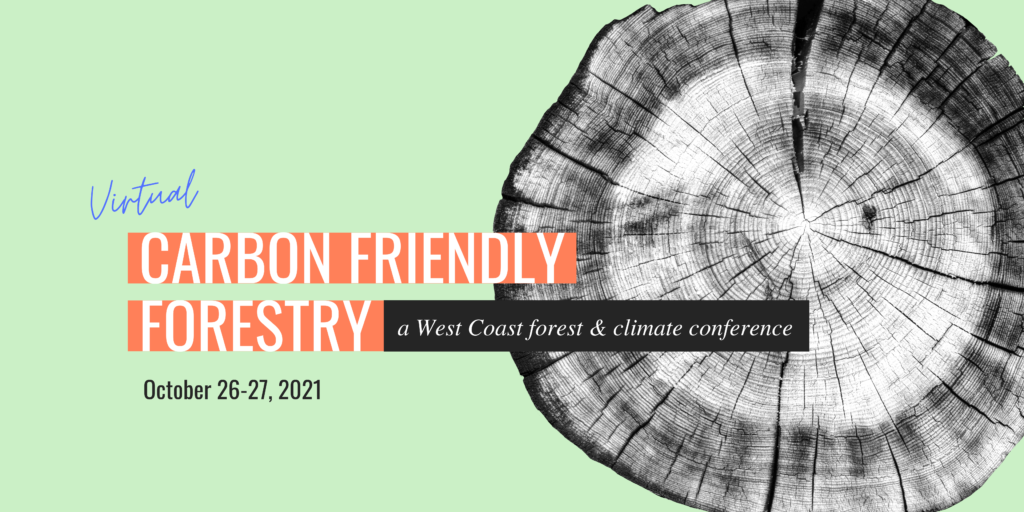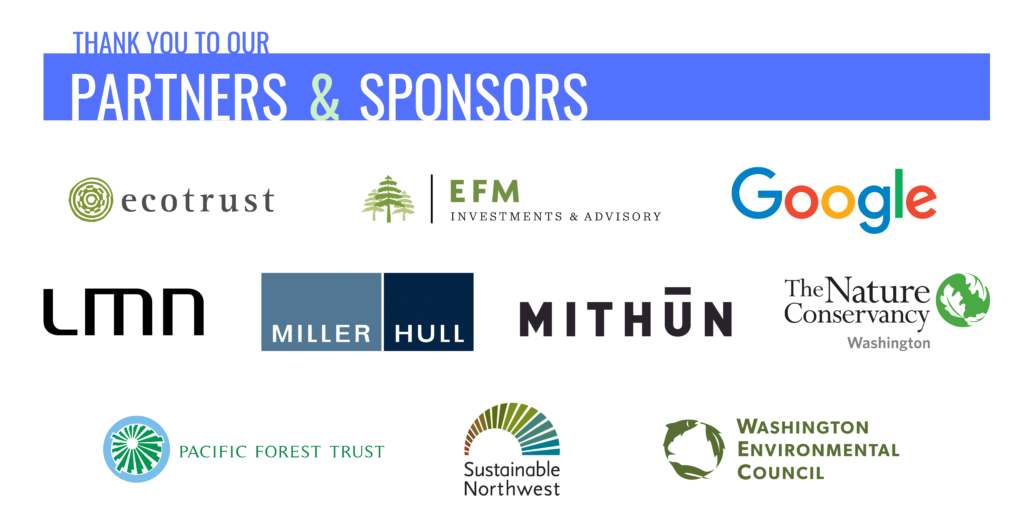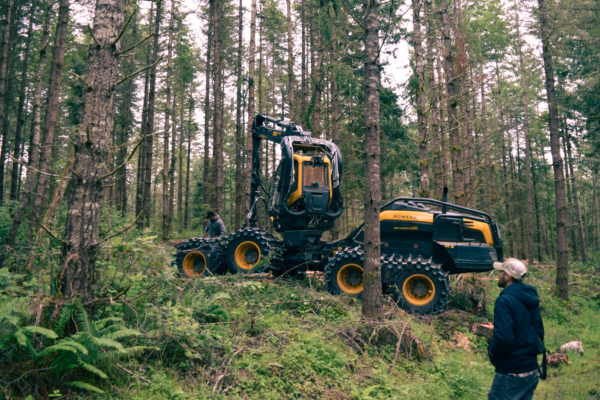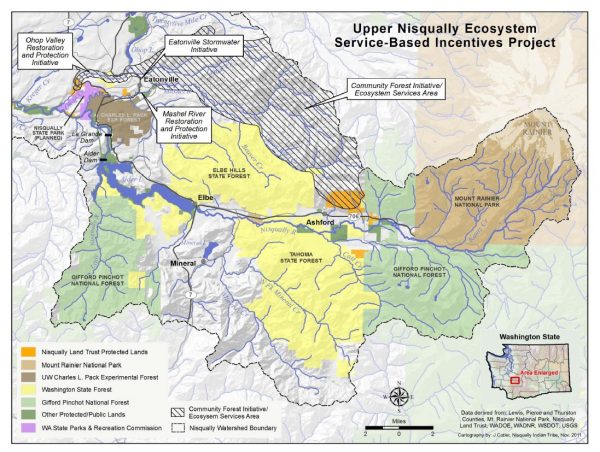by Darby Williams, Forest Program Intern
The past year has been one of extremes, from historic flooding events, wildfires, and this past summer’s record-breaking heat wave. It is becoming more and more evident that we are already living in the age of the climate crisis. As our way of life is existentially challenged, we must interrogate the practices that have brought us to this point and imagine new ways forward.

On October 26th & 27th, WEC hosted the fifth annual Carbon Friendly Forestry Conference on forest management and the climate crisis.
For the second year, the conference was held virtually, with a record number of registrants joining us to learn about climate-smart models of forestry, both novel and traditional. The conference considered the ways that West Coast forests can be managed for resiliency and have the potential to act as powerful carbon sinks. Our featured speakers—policymakers, community leaders, sustainable building experts, environmentalists, land managers and scientists—emphasized the multi-faceted elements of forestry that are vital to understand and account for in the context of the climate crisis. Attendees learned about community wildfire resilience, climate-smart wood, watershed forestry, urban & community forestry, carbon offsets, natural climate solutions, community-focused restoration, and Washington’s historic Climate Commitment Act.
Speakers shared exciting approaches to climate-smart forestry that ranged from green building to reintroducing “good fire” to the landscape. They resoundingly encouraged our society to challenge the status quo of forest management. Modern data and Indigenous knowledge tell us that forests are shaping to be key in mitigating and managing the effects of our rapidly changing climate. Reshaping how we understand and interact with forests is one of our greatest opportunities for addressing the existential threat of the climate crisis.
The importance of forests in mitigating climate change was underscored by Jamie Robertson of The Nature Conservancy, who presented a study quantifying the carbon storage potential of natural climate solutions in Washington. Natural climate solutions (NCS) are conservation, restoration, and improved land management actions that utilize natural systems to increase carbon storage. These are not substitutes for rapidly phasing out fossil fuels, but can be low-risk, cost-effective complementary actions with many ecological and public health co-benefits.
An individual NCS option is referred to as a pathway. Jamie’s research demonstrates that, of a variety of NCS pathways, letting trees grow longer between harvests has the greatest potential for reducing atmospheric carbon dioxide. Jamie explains, “as trees grow, they sequester or store more carbon annually, reaching their biological optimum and peak productivity around 80 years when the rate of sequestration levels off.” This means that if logging rotations can be extended to match the growth rate of the trees, and the harvested wood is incorporated into long-lived products, improved management of working forests can act as the most significant natural climate solution in Washington state. Meeting this full potential, however, requires changing how we practice forestry, how we value our natural resources, and creating incentives and support to help landowners and communities make this transition.
To achieve climate-smart forest stewardship, we not only need strong science and policy, but also thoughtful engagement and outreach—especially with communities historically excluded from decision-making. This is true across the landscape of topics, from increasing community involvement in wildfire preparedness, to inviting historically-oppressed groups to have a key role in shaping the Climate Commitment Act, and creating equitable access to urban greenspace.
To get input from communities that have been historically left out of conversations about forestry requires a shift away from business-as-usual practices. Senior Director of Civic Engagement and Advocacy at Latino Community Fund, Oskar Zambrano explains “when large organizations or government agencies request to get input from communities of color, they are usually not accessible through the language, culture or any other approach that may be familiar to our communities. For us, it’s very important to get these local community leaders. . . to lead this work.” Outreach must be thoughtful and cannot simply be transactional. In order to involve historically marginalized communities and create change, organizations and communities must build trust, and local leaders should be empowered. Oskar reminded us that intentional work needs to be done to foster positive relationships between marginalized communities and government organizations or traditional environmental groups.
As Belinda Brown of the Lomakatsi Project, a community-focused forest restoration group based in Southern Oregon and Northern California, explained, “99.9% of [our work] is communication and how we work together; everything we have is built on trust between people so we can work on the land.” In order to create lasting change, Belinda urged us to prioritize how we connect to each other and collaborate.
When we think about climate-smart forestry, we must think about both the impacts that humans have on forests and the reciprocal impacts that forests have on humans. Humans and forests have been in relationship since time immemorial, and they continue to shape each other. These connections are beautiful, complex, and delicate, and therefore they come with great responsibility. Joel Moffett of the Affiliated Tribes of Northwest Indians described the importance of caring for the natural world: “the tribes will be at the forefront, just as we always have been in being stewards of the land and honoring the sacred agreement we have with the animals, with the plants, with our brothers and sisters in the natural world. They take care of us, they always have, and in turn, it is our obligation and responsibility to take care of them.”
Recordings of the conference sessions and more information can be found here.




